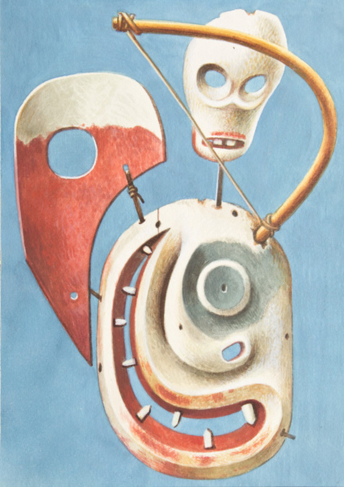![Item #52601 [An original watercolor of a First Nations fishing encampment along a river]. George Heriot, or possibly attributed to in the style of.](https://jamescumminsbookseller.cdn.bibliopolis.com/pictures/52601.jpg?width=768&height=1000&fit=bounds&auto=webp&v=1622140484)
[An original watercolor of a First Nations fishing encampment along a river].
[Canada]: [circa 1800].
Price: $17,500.00
About the item
Graphite, pen-and-ink and grey wash, on wove paper watermarked "W. Elgar 1796". 13 5/8 x 20 inches. Corners clipped outside the image, verso toned.
Item #52601
Along the falls of a tree-lined river, two First Nations men are pulling a canoe into the water, directed by another in an elaborate feather headdress; a wigwam with mother and child is on the same shore to their left; across the river a longhouse and structure for smoking fish with another group of native people can be seen; at the far left a First Nations man is standing in his canoe fishing with a pole in the water just below the rapids.
Although the 1796 watermark on the paper is consistent with drawings by Heriot, the unfinished quality of this work make attribution difficult. However, it is somewhat reminiscent of a smaller grisaille watercolor signed by Heriot titled FALLS OF THE POQUISQUE ON THE RIVER, ST JOHN on verso, sold at Waddington's March 15, 2018, lot 137.
Furthermore, this scene is reminiscent of one described by Heriot in his Travels in the Canadas (1807) in which he describes Native American fishing on the cacasdes of St. Mary, nine miles below the entrance to Lake Superior: "It is at the bottom of the rapids, and even among their billows, which foam with ceaseless impetuosity, that innumerable quantities of excellent fish may be taken, from the spring until the winter; the species which is found in the greatest abundance is denominated by the savages, atticameg, or white fish; the Michilimakinac trout, and pickerell, are likewise caught here. These aflford a principal means of subsistence to a number of native tribes. No small degree of address, as well as strength, is employed by the savages in catching these fish; they stand in an erect attitude in a birch canoe, and even amid the billows, they push with force to the bottom of the waters, a long pole, at the end of which is fixed a hoop, with a net in the form of a bag, into which the fish is constrained to enter. They watch it with the eye when it glides among the rocks, quickly ensnare it, and drag it into the canoe. In conducting this mode of fishing much practice is required, as an inexperienced person may, by the efforts which he is obliged to make, overset the canoe, and inevitably perish."
Trained by Paul Sandby at the Royal Military Academy, Woolwich (London), Heriot worked as a clerk for Board of Ordnance. "In 1792 [Heriot] was posted to Quebec and promoted clerk of the cheque in the Ordnance department. Heriot was to remain in Lower Canada until 1816, except, apparently, for two periods of absence, in 1796–97 and in 1806. His first years at Quebec are not well documented. Sketches record visits in and about Quebec and Montreal, perhaps on Ordnance business. In November 1792 he published a sketch of Jersey in the Quebec Magazine and the following year he prepared a view of Quebec, perhaps also intended for publication. When he returned to Britain in 1796 he resided in London, travelled to the south coast, and made at least one sketching foray into Wales ... A watercolour prepared from his sketches of Wales and two Canadian views were accepted by the Royal Academy of Arts for exhibition in the spring. Heriot probably sailed for Lower Canada soon afterwards, taking notes and making sketches on the voyage. The impact of his visit to Britain was considerable. While there he had been stimulated by the art he had seen and by his success as an artist. He returned with a fresh enthusiasm for the Canadas; he began to read about their past and to make elaborate notes and numerous sketches of the places he visited and the peoples he encountered. His sojourn abroad had affected his artistic vision of the Canadas; his drawings and water-colours assumed a new confidence and his landscape forms developed a new strength and grandeur. In London he had probably studied the simply handled and remarkably strong water-colours of younger British artists such as Thomas Girtin, Joseph Mallord William Turner, and John Varley. Either in Britain or in Lower Canada he had also become familiar with Lieutenant George Bulteel Fisher*’s Six views of North America ... (London, 1796). He was influenced by this work, especially by Fisher’s use of the Picturesque in depicting Canadian landscape" (Dictionary of Canadian Biography).


